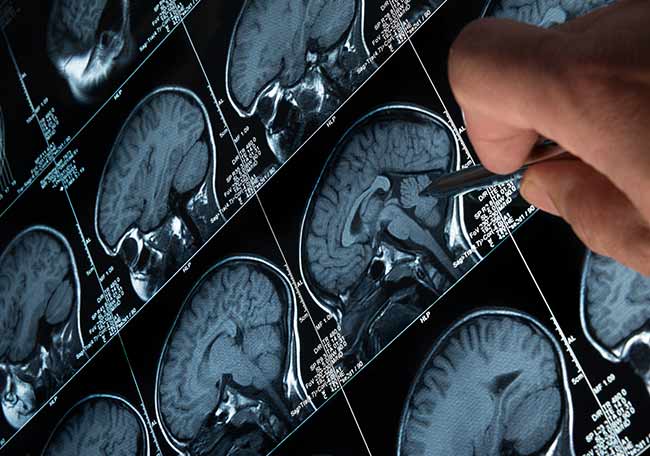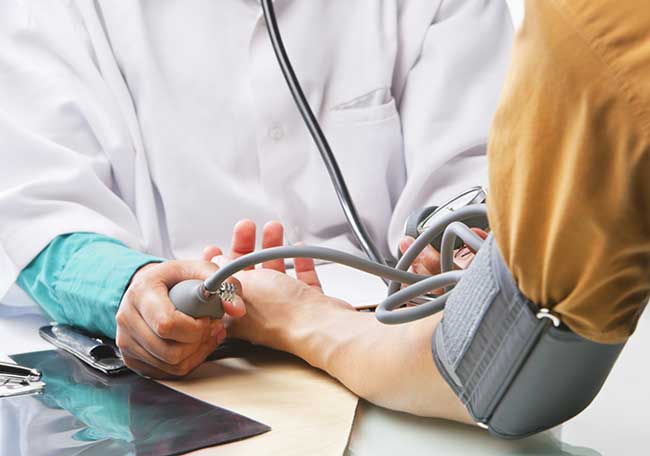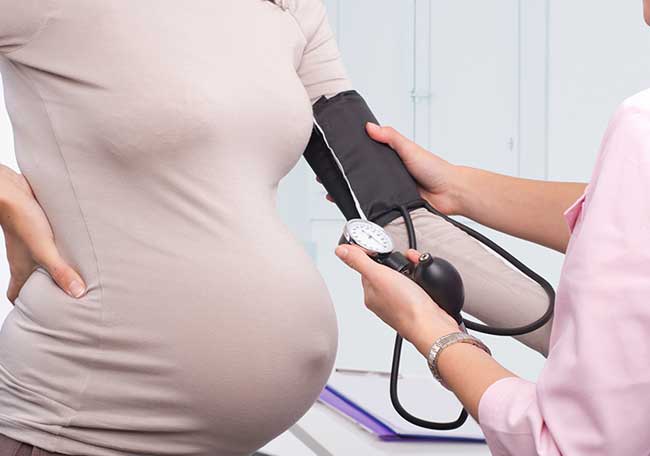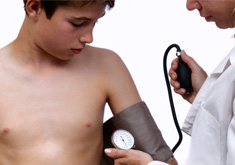Pesquisa de la hipertensión endócrina
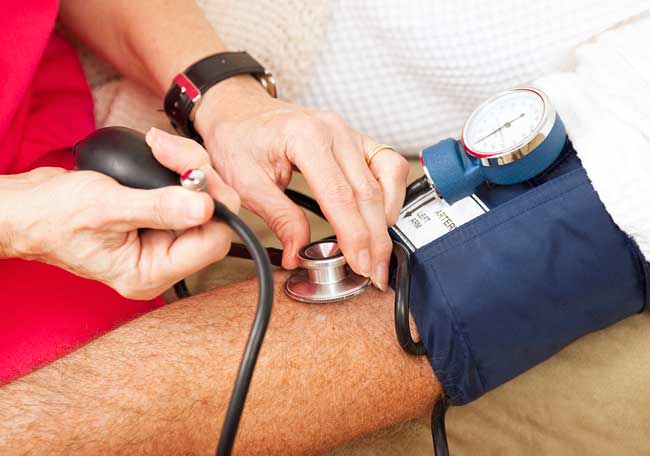
Referencias bibliográficas
1. Yoon SS, Ostchega Y, Louis T. Recent trends in the prevalence of high blood pressure and its treatment and control, 1999-2008. NCHS Data Brief. 2010;(48):1–8.
2. James PA, Oparil S, Carter BL, Cushman WC, Dennison-Himmelfarb C, Handler J, Lackland DT, LeFevre ML,MacKenzie TD, Ogedegbe O, Smith SC, Jr, Svetkey LP, Taler SJ, Townsend RR, Wright JT, Jr, Narva AS, Ortiz E. 2014 evidence-based guideline for the management of high blood pressure in adults: report from the panel members appointed to the Eighth Joint National Committee (JNC 8). JAMA. 2014;311(5):507–520.
3. Fields LE, Burt VL, Cutler JA, Hughes J, Roccella EJ, Sorlie P. The burden of adult hypertension in the United States 1999 to 2000: a rising tide. Hypertension. 2004;44(4):398–404.
4. Rudnick KV, Sackett DL, Hirst S, Holmes C. Hypertension in a family practice. Can Med Assoc J. 1977;117(5):492–497.
5. Omura M, Saito J, Yamaguchi K, Kakuta Y, Nishikawa T. Prospective study on the prevalence of secondary hypertension among hypertensive patients visiting a general outpatient clinic in Japan. Hypertens Res. 2004;27(3):193-202.
6. Gupta-Malhotra M, Banker A, Shete S, Hashmi SS, Tyson JE, Barratt MS, Hecht JT, Milewicz DM, Boerwinkle E. Essential hypertension vs. secondary hypertension among children. Am J Hypertens. 2015;28(1):73–80.
7. Camelli S, Bobrie G, Postel-Vinay N, Azizi M, Plouin PF, Amar L. Lb01.11: Prevalence of secondary hypertension in young hypertensive adults. J Hypertens. 2015;33(Suppl 1):e47.
8. O’Shea PM, Griffin TP, Fitzgibbon M. Hypertension: the role of biochemistry in the diagnosis and management. Clin Chim Acta. 2017;465:131–143.
9. Funder JW, Carey RM, Mantero F, Murad MH, Reincke M, Shibata H, Stowasser M, Young WF, Jr. The management of primary aldosteronism: case detection, diagnosis, and treatment: an Endocrine Society clinical practice guideline. J Clin Endocrinol Metab. 2016;101(5):1889–1916.
10. Lenders JW, Eisenhofer G, Mannelli M, Pacak K. Phaeochromocytoma. Lancet. 2005;366(9486):665–675.
11. DeLellis R, Lloyd R, Heitz P, Eng C. Pathology and Genetics of Tumours of Endocrine Organs. Lyon, France: IARC Press; 2004.
12. Mansmann G, Lau J, Balk E, Rothberg M, Miyachi Y, Bornstein SR. The clinically inapparent adrenal mass: update in diagnosis and management. Endocr Rev. 2004;25(2):309–340.
13. Lo CY, Lam KY, WatMS, Lam KS. Adrenal pheochromocytoma remains a frequently overlooked diagnosis. Am J Surg. 2000; 179(3):212–215.
14. Beard CM, Sheps SG, Kurland LT, Carney JA, Lie JT. Occurrence of pheochromocytoma in Rochester, Minnesota, 1950 through 1979. Mayo Clin Proc. 1983;58(12):802–804.
15. Kimura N, Miura Y, Nagatsu I, Nagura H. Catecholamine synthesizing enzymes in 70 cases of functioning and non-functioning phaeochromocytoma and extra-adrenal paraganglioma. Virchows Arch A Pathol Anat Histopathol. 1992;421(1):25–32.
16. Eisenhofer G, Lenders JW, Goldstein DS, Mannelli M, Csako G, Walther MM, Brouwers FM, Pacak K. Pheochromocytoma catecholamine phenotypes and prediction of tumor size and location by use of plasma free metanephrines. Clin Chem. 2005;51(4): 735–744.
17. Eisenhofer G, Pacak K, Huynh TT, Qin N, Bratslavsky G, Linehan WM, Mannelli M, Friberg P, Grebe SK, Timmers HJ, Bornstein SR, Lenders JW. Catecholamine metabolomic and secretory phenotypes in phaeochromocytoma. Endocr Relat Cancer. 2010;18(1):97–111.
18. Eisenhofer G, Huynh TT, Elkahloun A, Morris JC, Bratslavsky G, Linehan WM, Zhuang Z, Balgley BM, Lee CS, Mannelli M, Lenders JW, Bornstein SR, Pacak K. Differential expression of the regulated catecholamine secretory pathway in different hereditary forms of pheochromocytoma. Am J Physiol Endocrinol Metab. 2008;295(5):E1223–E1233.
19. Bravo EL, Tagle R. Pheochromocytoma: state-of-the-art and future prospects. Endocr Rev. 2003;24(4):539–553.
20. Eisenhofer G, Rivers G, Rosas AL, Quezado Z, Manger WM, Pacak K. Adverse drug reactions in patients with phaeochromocytoma: incidence, prevention and management. Drug Saf. 2007; 30(11):1031–1062.
21. Barrett C, van Uum SH, Lenders JW. Risk of catecholaminergic crisis following glucocorticoid administration in patients with an adrenal mass: a literature review. Clin Endocrinol (Oxf). 2015; 83(5):622–628.
22. Stolk RF, Bakx C, Mulder J, Timmers HJ, Lenders JW. Is the excess cardiovascular morbidity in pheochromocytoma related to blood pressure or to catecholamines? J Clin Endocrinol Metab. 2013;98(3):1100–1106.
23. Prejbisz A, Lenders JW, Eisenhofer G, Januszewicz A. Cardiovascular manifestations of phaeochromocytoma. J Hypertens. 2011;29(11):2049–2060.
24. Young WF, Jr. Clinical practice. The incidentally discovered adrenal mass. N Engl J Med. 2007;356(6):601–610.
25. Lenders JW, Duh QY, Eisenhofer G, Gimenez-Roqueplo AP, Grebe SK, Murad MH, Naruse M, Pacak K, Young WF, Jr; Endocrine Society. Pheochromocytoma and paraganglioma: an Endocrine Society clinical practice guideline. J Clin Endocrinol Metab. 2014;99(6):1915–1942.
26. Lenders JW, Pacak K, Walther MM, Linehan WM, Mannelli M, Friberg P, Keiser HR, Goldstein DS, Eisenhofer G. Biochemical diagnosis of pheochromocytoma: which test is best? JAMA. 2002; 287(11):1427–1434.
27. Perry CG, Sawka AM, Singh R, Thabane L, Bajnarek J, Young WF, Jr. The diagnostic efficacy of urinary fractionated metanephrines measured by tandem mass spectrometry in detection of pheochromocytoma. Clin Endocrinol (Oxf). 2007;66(5): 703–708.
28. de Jong WH, Eisenhofer G, Post WJ, Muskiet FA, de Vries EG, Kema IP. Dietary influences on plasma and urinary metanephrines: implications for diagnosis of catecholamine-producing tumors. J Clin Endocrinol Metab. 2009;94(8):2841–2849.
29. Eisenhofer G, Lenders JW, Siegert G, Bornstein SR, Friberg P, Milosevic D, Mannelli M, Linehan WM, Adams K, Timmers HJ, Pacak K. Plasma methoxytyramine: a novel biomarker of metastatic pheochromocytoma and paraganglioma in relation to established risk factors of tumour size, location and SDHB mutation status. Eur J Cancer. 2012;48(11):1739–1749.
30. Willemsen JJ, Sweep CG, Lenders JW, Ross HA. Stability of plasma free metanephrines during collection and storage as assessed by an optimized HPLC method with electrochemical detection. Clin Chem. 2003;49(11):1951–1953.
31. Willemsen JJ, Ross HA, Lenders JW, Sweep FC. Stability of urinary fractionated metanephrines and catecholamines during collection, shipment, and storage of samples. Clin Chem. 2007; 53(2):268–272.
32. Sawka AM, Thabane L, Gafni A, Levine M, Young WF, Jr. Measurement of fractionated plasma metanephrines for exclusion of pheochromocytoma: can specificity be improved by adjustment for age? BMC Endocr Disord. 2005;5(1):1.
33. Eisenhofer G, Lattke P, Herberg M, Siegert G, Qin N, D¨ arr R, Hoyer J, Villringer A, Prejbisz A, Januszewicz A, Remaley A, Martucci V, Pacak K, Ross HA, Sweep FC, Lenders JW. Reference intervals for plasma free metanephrines with an age adjustment for normetanephrine for optimized laboratory testing of phaeochromocytoma. Ann Clin Biochem. 2013;50(Pt 1):62–69.
34. Amar L, Eisenhofer G. Diagnosing phaeochromocytoma/ paraganglioma in a patient presenting with critical illness: biochemistry versus imaging. Clin Endocrinol (Oxf). 2015;83(3):298–302.
35. Algeciras-Schimnich A, Preissner CM, Young WF, Jr, Singh RJ, Grebe SK. Plasma chromogranin A or urine fractionated metanephrines follow-up testing improves the diagnostic accuracy of plasma fractionated metanephrines for pheochromocytoma. J Clin Endocrinol Metab. 2008;93(1):91–95.
36. Eisenhofer G, Goldstein DS, Walther MM, Friberg P, Lenders JW, Keiser HR, Pacak K. Biochemical diagnosis of pheochromocytoma: how to distinguish true- from false-positive test results. J Clin Endocrinol Metab. 2003;88(6):2656–2666.
37. Conn JW. Presidential address. I. Painting background. II. Primary aldosteronism, a new clinical syndrome. J Lab Clin Med. 1955;45(1):3–17.
38. Conn JW, Knopf RF, Nesbit RM. Clinical characteristics of primary aldosteronism from an analysis of 145 cases. Am J Surg. 1964;107:159–172.
39. Mulatero P, Stowasser M, Loh KC, Fardella CE, Gordon RD, Mosso L, Gomez-Sanchez CE, Veglio F, Young WF, Jr. Increased diagnosis of primary aldosteronism, including surgically correctable forms, in centers from five continents. J Clin Endocrinol Metab. 2004;89(3):1045–1050.
40. Rossi GP, Bernini G, Caliumi C, Desideri G, Fabris B, Ferri C, Ganzaroli C, Giacchetti G, Letizia C, Maccario M, Mallamaci F, Mannelli M, Mattarello MJ, Moretti A, Palumbo G, Parenti G, Porteri E, Semplicini A, Rizzoni D, Rossi E, Boscaro M, Pessina AC, Mantero F; PAPY Study Investigators. A prospective study of the prevalence of primary aldosteronism in 1,125 hypertensive patients. J Am Coll Cardiol. 2006;48(11):2293–2300.
41. Calhoun DA, Nishizaka MK, Zaman MA, Thakkar RB, Weissmann P. Hyperaldosteronism among black and white subjects with resistant hypertension. Hypertension. 2002;40(6):892–896.
42. Eide IK, Torjesen PA, Drolsum A, Babovic A, Lilledahl NP. Lowrenin status in therapy-resistant hypertension: a clue to efficient treatment. J Hypertens. 2004;22(11):2217–2226.
43. Young WF, Jr, Klee GG. Primary aldosteronism. Diagnostic evaluation. Endocrinol Metab Clin North Am. 1988;17(2):367–395.
44. Gordon RD, Stowasser M, Klemm SA, Tunny TJ. Primary aldosteronism and other forms of mineralocorticoid hypertension. In: Swales J, ed. Textbook of Hypertension. London: Blackwell Scientific Publications; 1994:865–892.
45. Murphy BF, Whitworth JA, Kincaid-Smith P. Malignant hypertension due to an aldosterone producing adrenal adenoma. Clin Exp Hypertens A. 1985;7(7):939–950.
46. Vetter H, Siebenschein R, Studer A, Witassek F, Furrer J, Gl¨anzer K, Siegenthaler W, Vetter W. Primary aldosteronism: inability to differentiate unilateral from bilateral adrenal lesions by various routine clinical and laboratory data and by peripheral plasma aldosterone. Acta Endocrinol (Copenh). 1978;89(4):710–725.
47. Rich GM, Ulick S, Cook S, Wang JZ, Lifton RP, Dluhy RG. Glucocorticoid-remediable aldosteronism in a large kindred: clinical spectrum and diagnosis using a characteristic biochemical phenotype. Ann Intern Med. 1992;116(10):813–820.
48. Stowasser M, Gartside MG, Gordon RD. A PCR-based method of screening individuals of all ages, from neonates to the elderly, for familial hyperaldosteronism type I. Aust N Z J Med. 1997;27(6):685–690.
49. Gordon RD, Stowasser M. Familial forms broaden the horizons for primary aldosteronism. Trends Endocrinol Metab. 1998;9(6):220–227.
50. Stowasser M, Gordon RD. Primary aldosteronism: from genesis to genetics. Trends Endocrinol Metab. 2003;14(7):310–317.
51. Stowasser M, Huggard PR, Rossetti TR, Bachmann AW, Gordon RD. Biochemical evidence of aldosterone overproduction and abnormal regulation in normotensive individuals with familial hyperaldosteronism type I. J Clin Endocrinol Metab. 1999;84(11): 4031–4036.
52. Gordon RD, Stowasser M, Rutherford JC. Primary aldosteronism: are we diagnosing and operating on too few patients? World J Surg. 2001;25(7):941–947.
53. Ono Y, Iwakura Y, Morimoto R, Kudo M, Igarashi Y, Nezu M, Tezuka Y, Ogawa H, Ito S, Stash F. Os 35-01 the prevalence of sleep apnea syndrome in primary aldosteronism. J Hypertens. 2016;34(Suppl 1) - ISH 2016 Abstract Book:e399.
54. Campino C, Trejo P, Carvajal CA, Vecchiola A, Valdivia C, Fuentes CA, Delgado JF, Lagos CF, Aglony M, Carrasco C, Martinez-Aguayo A, Garc´ıa H, Loureiro C, Fardella CE. Pregnancy normalized familial hyperaldosteronism type I: a novel role for progesterone? J Hum Hypertens. 2015;29(2):138–139.
55. Ronconi V, Turchi F, Zennaro MC, Boscaro M, Giacchetti G. Progesterone increase counteracts aldosterone action in a pregnant woman with primary aldosteronism. Clin Endocrinol (Oxf). 2011;74(2):278–279.
56. Albiger NM, Sartorato P, Mariniello B, Iacobone M, Finco I, Fassina A, Mantero F. A case of primary aldosteronism in pregnancy: do LH and GNRH receptors have a potential role in regulating aldosterone secretion? Eur J Endocrinol. 2011;164(3): 405–412.
57. Teo AE, Garg S, Shaikh LH, Zhou J, Karet Frankl FE, Gurnell M, Happerfield L, Marker A, Bienz M, Azizan EA, Brown MJ. Pregnancy, primary aldosteronism, and adrenal CTNNB1 mutations. N Engl J Med. 2015;373(15):1429–1436.
58. Celen O, O’Brien MJ, Melby JC, Beazley RM. Factors influencing outcome of surgery for primary aldosteronism. Arch Surg. 1996;131(6):646–650.
59. Rutherford JC, Taylor WL, Stowasser M, Gordon RD. Success of surgery for primary aldosteronism judged by residual autonomous aldosterone production. World J Surg. 1998;22(12):1243–1245.
60. Stowasser M, Gordon RD. Primary aldosteronism–careful investigation is essential and rewarding. Mol Cell Endocrinol. 2004;217(1-2):33–39.
61. Karagiannis A, Tziomalos K, Papageorgiou A, Kakafika AI, Pagourelias ED, Anagnostis P, Athyros VG, Mikhailidis DP. Spironolactone versus eplerenone for the treatment of idiopathic hyperaldosteronism. Expert Opin Pharmacother. 2008;9(4):509–515.
62. Lim PO, Farquharson CA, Shiels P, Jung RT, Struthers AD, MacDonald TM. Adverse cardiac effects of salt with fludrocortisone in hypertension. Hypertension. 2001;37(3):856–861.
63. Fallo F, Sonino N. Metabolic syndrome and primary aldosteronism: time for reappraisal? J Hum Hypertens. 2010;24(10):623–624.
64. Stowasser M. New perspectives on the role of aldosterone excess in cardiovascular disease. Clin Exp Pharmacol Physiol. 2001;28(10):783–791.
65. Weber KT, Brilla CG. Pathological hypertrophy and cardiac interstitium. Fibrosis and renin-angiotensin-aldosterone system. Circulation. 1991;83(6):1849–1865.
66. Young MJ, Funder JW. Mineralocorticoid receptors and pathophysiological roles for aldosterone in the cardiovascular system. J Hypertens. 2002;20(8):1465–1468.
67. Catena C, ColussiG,Nadalini E,Chiuch A, Baroselli S, Lapenna R, Sechi LA. Cardiovascular outcomes in patients with primary aldosteronism after treatment. Arch Intern Med. 2008;168(1):80–85.
68. Milliez P, Girerd X, Plouin PF, Blacher J, Safar ME, Mourad JJ. Evidence for an increased rate of cardiovascular events in patients with primary aldosteronism. J Am Coll Cardiol. 2005;45(8):1243–1248.
69. Reincke M, Fischer E, Gerum S, Registry-Else Kr¨ oner-Fresenius-Hyperaldosteronism Registry. Observational study mortality in treated primary aldosteronism: the German Conn’s registry. Hypertension. 2012;60(3):618–624.
70. Gordon RD. Primary aldosteronism. J Endocrinol Invest. 1995; 18(7):495–511.
71. Ahmed AH, Gordon RD, Taylor PJ, Ward G, Pimenta E, Stowasser M. Effect of contraceptives on aldosterone/renin ratio may vary according to the components of contraceptive, renin assay method, and possibly route of administration. J Clin Endocrinol Metab. 2011;96(6):1797–1804.
72. Ahmed AH, Gordon RD, Taylor PJ, Ward G, Pimenta E, Stowasser M. Are women more at risk of false-positive primary aldosteronism screening and unnecessary suppression testing than men? J Clin Endocrinol Metab. 2011;96(2):E340–E346.
73. McKenna TJ, Sequeira SJ, Heffernan A, Chambers J, Cunningham S. Diagnosis under random conditions of all disorders of the reninangiotensin-aldosterone axis, including primary hyperaldosteronism. J Clin Endocrinol Metab. 1991;73(5):952–957.
74. Gordon RD, Geddes RA, Pawsey CG, O’Halloran MW. Hypertension and severe hyperkalaemia associated with suppression of renin and aldosterone and completely reversed by dietary sodium restriction. Australas Ann Med. 1970;19(4):287–294.
75. Stowasser M, Gordon RD. The aldosterone-renin ratio for screening for primary aldosteronism. Endocrinologist. 2004;14(5):267–276.
76. Brown MJ, Hopper RV. Calcium-channel blockade can mask the diagnosis of Conn’s syndrome. Postgrad Med J. 1999;75(882):235–236.
77. Mulatero P, Rabbia F, Milan A, Paglieri C, Drug effects on aldosterone/plasma renin activity ratio in primary aldosteronism. Hypertension. 2002;40(6):897–902.
78. Stowasser M, Taylor PJ, Pimenta E, Ahmed AH, Gordon RD. Laboratory investigation of primary aldosteronism. Clin Biochem Rev. 2010;31(2):39–56.
79. Ahmed AH, Gordon RD, Taylor P, Ward G, Pimenta E, Stowasser M. Effect of atenolol on aldosterone/renin ratio calculated by both plasma renin activity and direct renin concentration in healthy male volunteers. J Clin Endocrinol Metab. 2010;95(7):3201–3206.
80. Ahmed AH, Calvird M, Gordon RD . Effects of two selective serotonin reuptake inhibitor antidepressants, sertraline and escitalopram, on aldosterone/renin ratio in normotensive depressed male patients. J Clin Endocrinol Metab. 2011;96(4):1039–1045.
81. Melcescu E, Phillips J, Moll G, Subauste JS, Koch CA. 11Betahydroxylase deficiency and other syndromes of mineralocorticoid excess as a rare cause of endocrine hypertension. Horm Metab Res. 2012;44(12):867–878.
82. Speiser PW, Azziz R, Baskin LS. Congenital adrenal hyperplasia due to steroid 21-hydroxylase deficiency: an Endocrine Society clinical practice guideline. J Clin Endocrinol Metab. 2010;95(9):4133–4160.
83. Krone N, Arlt W. Genetics of congenital adrenal hyperplasia. Best Pract Res Clin Endocrinol Metab. 2009;23(2):181–192.
84. White PC, Dupont J, NewMI, Leiberman E . A mutation in CYP11B1 (Arg-448——His) associated with steroid 11 beta-hydroxylase deficiency in Jews of Moroccan origin.J Clin Invest. 1991;87(5):1664–1667.
85. Merke DP, Bornstein SR. Congenital adrenal hyperplasia. Lancet. 2005;365(9477):2125–2136.
86. New MI, Geller DS, Fallo F, Wilson RC. Monogenic low renin hypertension. Trends Endocrinol Metab. 2005;16(3):92–97.
87. Kim YM, KangM, Choi JH, Lee BH, KimGH, Ohn JH, KimSY, ParkMS, YooHW. Areviewof the literature on commonCYP17A1 mutations in adults with 17-hydroxylase/17,20-lyase deficiency, a case series of such mutations among Koreans and functional characteristics of a novel mutation.Metabolism. 2014;63(1):42–49.
88. Mu¨ ssig K,WehrmannM,Horger M. Adrenocortical carcinoma producing 11-deoxycorticosterone: a rare cause of mineralocorticoid hypertension. J Endocrinol Invest. 2005;28(1):61–65.
89. Ishikawa SE, Saito T, Kaneko K, Okada K, Fukuda S, Kuzuya T. Hypermineralocorticism without elevation of plasma aldosterone: deoxycorticosterone-producing adrenal adenoma and hyperplasia. Clin Endocrinol (Oxf). 1988;29(4):367–375.
90. Nicolaides NC, Roberts ML, Kino T. A novel point mutation of the human glucocorticoid receptor gene causes primary generalized glucocorticoid resistance through impaired interaction with the LXXLL motif of the p160 coactivators: dissociation of the transactivating and transreppressive activities. J Clin Endocrinol Metab. 2014;99(5):E902–E907.
Comentarios
Para ver los comentarios de sus colegas o para expresar su opinión debe ingresar con su cuenta de IntraMed.
